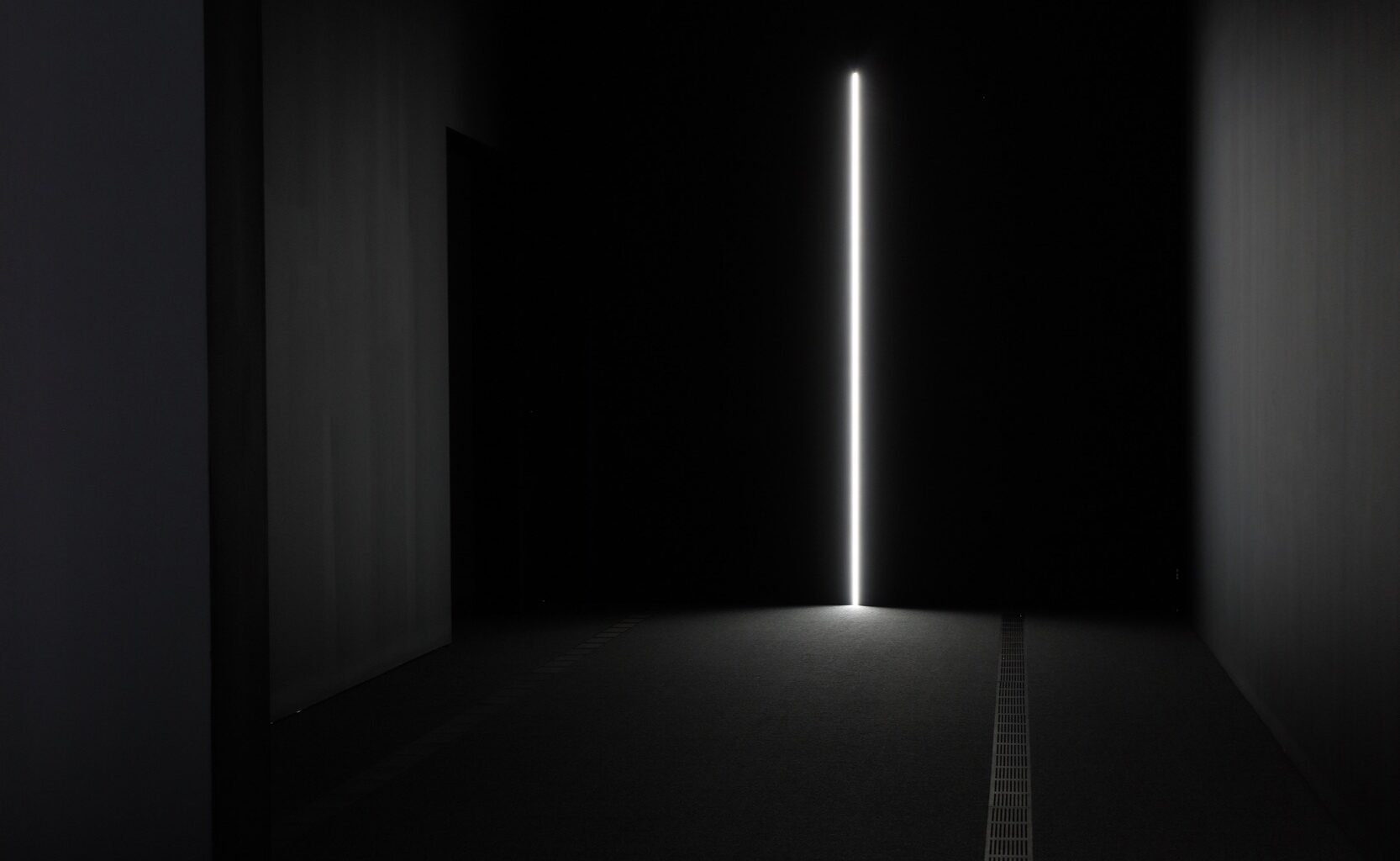data-verse
High Museum of Art
March 7–August 10, 2025
Philadelphia, PA
Between the infinite and nothingness lies the “data-verse.” This dialectic is at the center of Ryoji Ikeda’s first museum exhibition in the United States at the High Museum of Art. Ryoji Ikeda: data-verse builds on the artist’s growing critical acclaim and affirms his reputation for complex technological work.
Organized into seven distinct chapters, the exhibition begins with a loosely connected series of installations which explore the poetic and phenomenological effects of Ikeda’s attempts to materialize light and sound. The show opens with point of no return (2018), an immense pulsing white screen with a slowly dilating black hole at its center. The work’s visual economy of means masks its complex relational effects and symbolic overtones. As the viewer walks closer and contemplates the piece, the black hole at the center appears to be reconfigured from a flat, two-dimensional image into an immersive field. The frenzied, pulsing energy of the white screen disappears amidst the stilled, vast emptiness of the black hole. An illusory optical effect, this transformation mimics the notion that the viewer has been pulled inside the black hole’s magnetic field. Stepping back from the screen, the viewer is visually re-grounded within the space of the gallery as the pulsing light returns and the black hole once again becomes a flattened two-dimensional image. Point of no return is both an invitation to the viewer and a philosophical query which prefaces the remaining works in the exhibition. The black hole at its center is suggestive of the moment in the universe before the Big Bang, before there was light, before the universe would begin to expand.
The remaining installations of this initial series—mass (2023) and line (2008)—explore that expansion, the moment after the Big Bang, when light emerged from darkness and yielded matter. Mass features similar black-and-white circular forms which ripple across a large screen placed directly on the floor. Installed in a darkened, low-lit gallery whose black walls absorb light, the images on the massive screen seem to take on three-dimensional form, appearing to open into a swirling abyss below. Ikeda’s play with optical illusion transforms the continuously decentering circular form on screen into a three-dimensional sphere. As we stand at the work’s edge, teetering above its seemingly limitless depth, mass’s vertiginous effect is deeply humbling, a reminder of humanity’s infinitesimal place within the universe.
The final installation in this series, line, plays with optical illusion through an economy of visual means while cheekily laying bare its own making. Similarly installed in a darkened gallery, the work appears at the end of a long hallway as a single, thin line of light bursting from the darkness. Its totemic elegance beckons viewers to draw near, evocatively playing with the potential transcendence manifested in walking towards the light. Doing so, however, reveals the optical illusion of line, as it becomes apparent that the light does not emanate from a bulb or screen, but rather, from a slit cut into the gallery wall which allows for the light of the window behind the wall to shine through. The work’s simplicity conceals its metaphysical complexity. Like Barnett Newman’s “zip,” Ikeda’s line upends figure-ground relations but does so while sculpting light, as Ikeda corrals the immateriality of light into geometric form.
